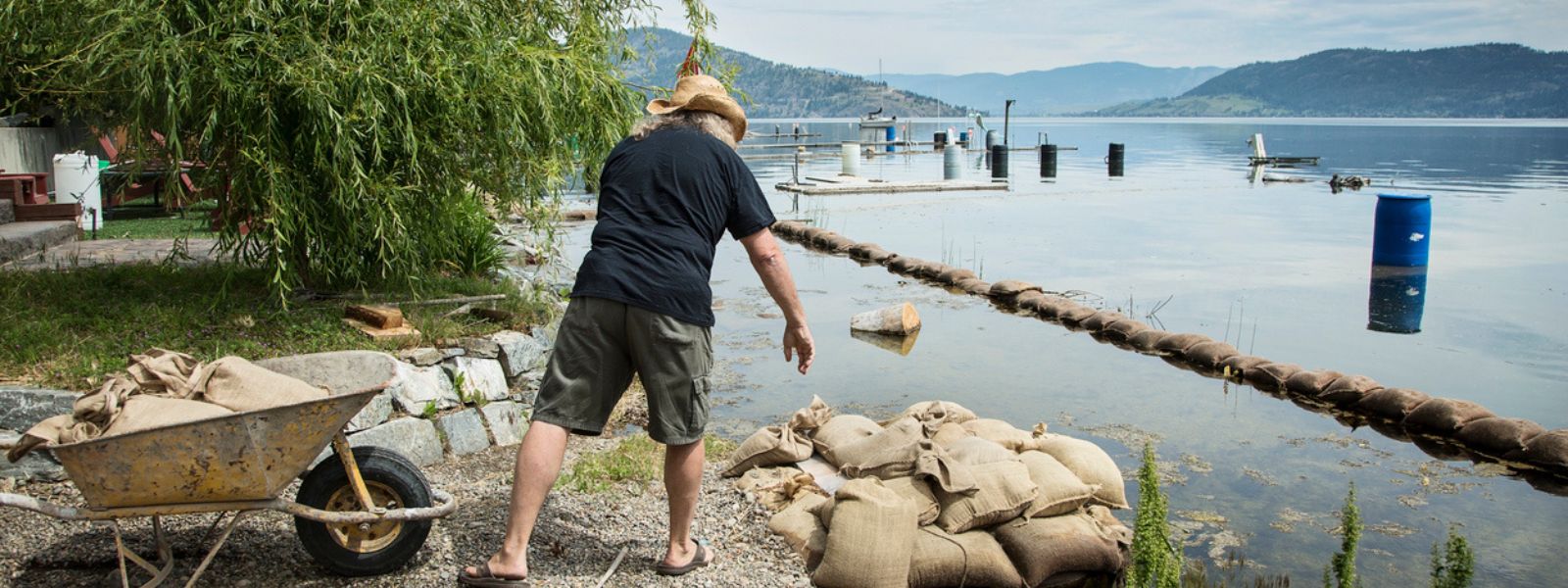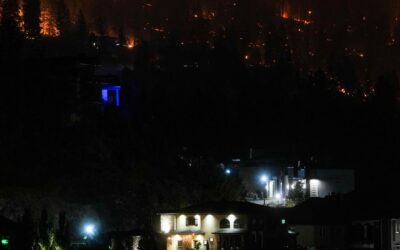The threat of climate change is hitting too close to home for millions of Canadians this summer. Wildfires drive people from their homes. Smoke obscures the skylines of faraway cities, and searing temperatures set new records.
It’s a stark backdrop for the release of the federal government’s final National Adaptation Strategy this week. Finalizing the Strategy is an important step forward in the gargantuan effort to more resilient infrastructure, communities, and ways of living in the face of worsening impacts from climate change. Ensuring that it now delivers the results Canadians are counting on will take significant new funding, sustained focus and coordinated action by governments across the country.
Why is Canada’s adaptation strategy important?
A national strategy is crucial because of the sheer scale of climate change risks and the adaptation measures required to make communities across Canada more resilient. Homes and buildings need to be upgraded to keep people safe during extreme heat events. Critical infrastructure like above-ground power lines, internet services and mobile towers are at high risk during floods and fires—precisely when we rely on them most. And amid a nationwide affordable housing crisis, floods and wildfires threaten millions of people’s homes, particularly in Indigenous communities.
Making infrastructure and communities more resilient to climate threats is expected to require billions of dollars each year. But without the focus and shared gameplan of a national adaptation strategy, adaptation efforts and investments in Canada have been nowhere near this level.
What does Canada’s national adaptation strategy do?
In the face of such significant and growing need, the National Adaptation Strategy provides essential guidance for how governments, businesses and people can work together to rise to the challenge. It sets nationwide priorities and measurable targets to increase resilience to key climate change risks.
The Strategy, for instance, directs the federal and provincial governments to work together to identify and map Canada’s riskiest flood zones, and take steps to protect people and communities in those areas. It indicates that governments and associations for key professions, such as engineers and urban planners, should collaborate. They should train practitioners to build climate resilience into critical designs and decisions. And it commits the federal government to support municipalities and Indigenous communities with funding and other tools to build climate-resilient infrastructure.
Next steps: what’s needed to turn the strategy into reality?
The challenge is now to translate this ambitious, high-level strategy into results. This requires three things:
- Concrete action and funding: The federal government has committed $1.6 billion over several years to new or expanded programs that support some of the Strategy’s objectives. However, this only keeps federal adaptation funding at current levels because other programs are ending. The federal government must scale action and investment immediately and dramatically to meet the National Adaptation Strategy’s targets, beginning with the 2023 Fall Economic Statement and Budget 2024.
- Coordination within and across governments: Currently, responsibility for implementing the Strategy falls to Environment and Climate Change Canada. But to drive the coordination required across government, top federal decision-makers should create directives to compel other departments and agencies to contribute to implementation. The federal government must also move quickly on the bilateral action plans and Indigenous Climate Leadership Agenda proposed in the Strategy. Success can only be realized through the combined knowledge, powers and resources of provincial, territorial and Indigenous governments.
- Tracking, accountability, and continuous improvement: The federal government must monitor progress to ensure actions under the Strategy are happening, and assess how those actions are making Canada and Canadians more resilient. It should hold responsible individuals and entities to account for inaction. And if the actions taken are not having the desired effect, those actions—and even the Strategy itself—should be reconsidered. The current Strategy proposes a preliminary monitoring and evaluation plan. But this needs to be far more extensive to ensure accountability and continuous improvement.
Canada’s climate is changing, fast—and the adaptation gap is expanding. Now that we have a comprehensive National Adaptation Strategy, governments across the country must work together. They must make actions and investments that will bring this Strategy to life. The sooner they do, the faster it will pay off, saving lives and livelihoods as the impacts of climate change hit ever closer to home.








